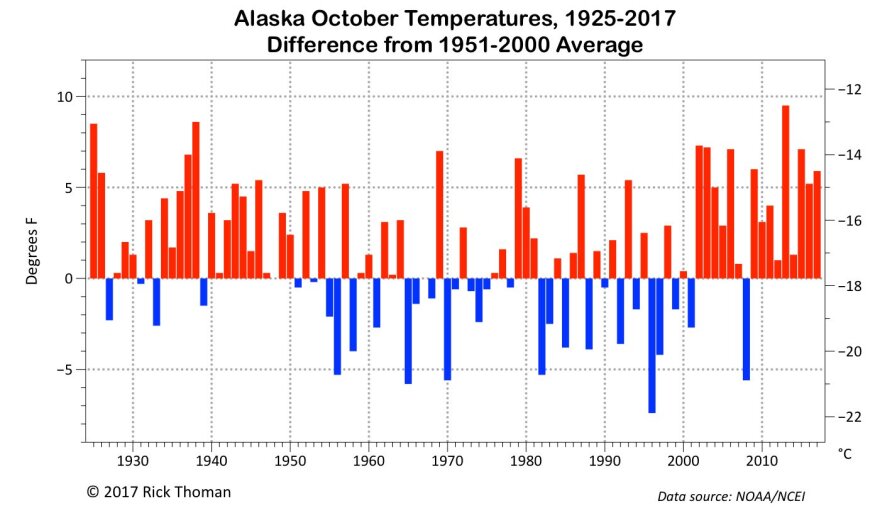Unseasonably warm and wet weather last month laid down a coating of hard-to-remove all around the Interior. That’s kept the crews that remove snow and ice from roads and runways busy.
National Weather Service climate specialist Rick Thoman says an unusually warm and wet October set the stage for formation of the stubborn ice that’s slickened roads all around the Interior.
“It was very mild,” he said, “and we had an inordinately a large number of either mixed rain-and-snow events or, at valley level at least, just straight rain events, unusually late in the year.”
Thoman says later in October, precipitation that fell during above-freezing daytime temperatures froze to roadways and other such surfaces when it cooled down at night.
“By the time we get to the second half of October,” he said, “we’re not getting much heating from the sun anymore, and it’s hard to stay above freezing for any length of time at night. So, when we get water on the road, it’s the perfect set-up for icy roads.”

Even more so because most of the precipitation that fell during October came in liquid form – not snowfall, which is more typical of this time of year.
“We had the third-highest precipitation total of any October in Fairbanks in the last hundred-plus years,” Thoman said. “But our snowfall, only 5.3 inches, that’s significantly below normal.”
And that’s why many state Department of Transportation workers are literally working overtime to try and make the area’s roadways safer.
“This year, the Department of Transportation has applied far more traction aids than we used last year,” says department spokeswoman Meadow Bailey.

She says workers have been applying those traction aids such as sand and gravel especially heavily over the past week. “So we’re really struggling and trying to fight the accumulation of ice on the roadways.”
The de-icing battle also is being waged on airfield runways around Fairbanks.
Eielson Air Force Base officials say “Airmen work around the clock to ensure the flight line is clear and ready to support flying operations. To make this happen we have three, eight-hour shifts per day with 16 personnel on each shift.
“To cope with the uncommon weather conditions we've experienced this year, we have used more of the de-icing chemical on the runway than we've typically used in the past,” Eielson officials said in a statement issued Thursday.

State Deputy Transportation Commissioner John says workers at Fairbanks International Airport have had to use much more de-icing solution over the past couple of weeks than is normal for this time of year.
“Fairbanks, here this past week, has had a horrible week as far as freezing rain and what-not,” Binder said in a talk in Sitka last week. “They spent almost a quarter of their budget already this year just in this last week on their de-icing chemical. Five thousand gallons they put down in just a couple days.”
Airport spokeswoman Sammy Loud says crews there has had to spend a lot more on de-icing fluid this September than the previous September.
“For fiscal year ’17 in September, we spent a $144,000 on de-icing fluid, versus this last September, in fiscal year ’18, we used $252,000.”
Loud says so far this fiscal year the airport has spent nearly two-thirds of the amount it spent on de-icing agents in all of the previous fiscal year.
“So, the entire amount that we used on de-icing measures last year was $358,000. And to date this year, we’re used $205,000.”
Loud says the airport uses both solid and liquid de-icing agents as well as, in some situations, plain ol’ sand.
Editor's note: This story was revised to include information about Eielson Air Force Base's efforts to clear ice from its runways.



